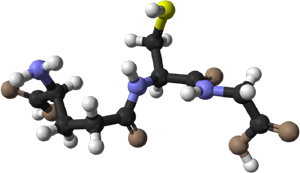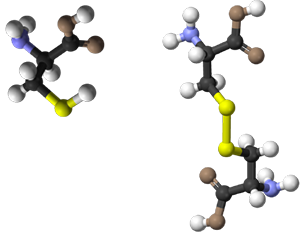Our commitment to excellence ensures we remain at the forefront of scientific innovation and medical research.
Our Whey
There are many preconceptions when it comes to whey. Traditionally, whey protein is regarded as an ergogenic aid — facilitating muscle recovery and lean tissue synthesis. Our products are built on the foundation and understanding that whey’s health-enhancing properties extend far beyond its ability to support athletic development. When manufactured using processes that preserve its unique and fragile structures, whey supplementation can lead to enhanced immune function, improved body composition and a reduction in the lean tissue and bone density loss associated with age.
Commercial processes denature whey’s valuable and unique protein structures. The vast majority of existing products derive from whey sourced from the by-product of the cheese making process — where pasteurisation and heat treatments have already caused irreversible damage. Our products contain only the finest native whey proteins, manufactured directly from the untreated milk of grass-fed, non hormone treated cows. The latest filtration and drying processes are utilised to gently remove the unwanted fat and lactose whilst preserving the integrity of the health-enhancing sub-fractions and glutathione precursors.
Glutathione
Glutathione, a tripeptide protein molecule consisting of the amino acids glutamic acid, glycine and cysteine, is present in almost every cell in the human body. It is the keystone of the body’s cellular antioxidant defense system and regulates many aspects of immune function. Despite being a relatively unknown term, glutathione is at the forefront of current medical research thanks to its fundamental importance to many aspects of our health. Cells are under constant threat from reactive oxygen compounds (free radicals) — the oxidative by-products of cellular metabolism. Glutathione, our master antioxidant, actively destroys free radicals whilst regulating the function of the lesser antioxidants, Vitamin C and Vitamin E. Glutathione is also a powerful detoxifying agent, helping eliminate pollutants and carcinogens. It is no surprise that the highest concentration of glutathione is found in the liver: the principal organ involved in detoxification and removal of toxins. Glutathione actively bonds with heavy metals, creating a water-soluble compound that can be readily flushed from the body. Optimising glutathione levels results in the proliferation of lymphocytes (white blood cells) and enhanced immune response. Glutathione deficiency can cause hemolysis (sever anemia caused by the destruction of red blood cells) and numerous diseases of oxidative stress. Recent studies suggest glutathione may play an active role in the prevention of cancers and autoimmune and immune deficiency diseases such as chronic fatigue syndrome, rheumatoid arthritis, fibromyalgia and AIDS. Many factors such as stress, smoking and strenuous exercise contributes to the depletion of glutathione in our cells. Most prolifically however, is its relationship with age. As we age, the production of glutathione in our cells slows dramatically, leaving us prone to the oxidative damage caused by free radicals — resulting in physical degradation, or ageing. Enhancing intracellular glutathione synthesis through supplementation of glutathione precursors may dramatically improve many aspects of our health, reduce susceptibility to illness and disease and help prevent premature aging. REGENATIVE®, our patent pending flagship product, has been scientifically formulated to provide a safe and effective source of potent, natural glutathione precursors.
Cystine VS Cysteine
Cysteine is considered the rate-limiting factor for intracellular glutathione synthesis since it is not readily available in our diets. However, upon ingestion, free form cysteine is spontaneously catabolised in the gastrointestinal tract and blood plasma, resulting in an ineffective and potentially toxic delivery system to the cell.
Cystine, abundantly found in Whey Forward’s native whey proteins, is a dimeric amino acid consisting of two cysteine molecules covalently linked by a disulfide bond. Cystine is the ideal delivery system to the cell, passing safely through the gastrointestinal tract and blood plasma. Upon cell entry, the weak disulfide bond is cleaved, providing two cysteine molecules to facilitate intracellular glutathione production.
Lactoferrin
Whey is a complex protein consisting of a number of smaller protein subfractions, or peptides. These include beta-lactoglobulin, alpha-lactalbumin, immunoglobulins, glycomacropeptides, bovine serum albumin, and minor peptides such as lactoperoxidases, lysozyme and lactoferrin. Each of these protein subfractions has a unique biological property.
Lactoferrin is a highly bioactive whey peptide with the most significantly documented anti-viral, anti-microbial, anti-cancer and immune modulating/enhancing effects. Interestingly, lactoferrin is a key component of human colostrum (breast milk), and this appears to be the primary mechanism for transferring immunity to infants.
It is lactoferrin’s affinity for iron that is key to its immune-modulating and disease-fighting properties. Lactoferrin binds readily with iron, in turn improving our bodies iron uptake. Upon binding with iron, invading pathogens and harmful bacteria are denied this valuable resource — limiting their chance of survival. Recent studies also suggest that lactoferrin can suppress tumour growth and the spread of some cancers by limiting their source of iron.
Studies have highlighted the importance of lactoferrin in the health and function of the gastrointestinal tract — shown to have a profound effect on systemic and intestinal inflammation thanks to its ability to promote beneficial bacteria in the gut.
Lactoferrin may also have a physiological role in skeletal development and hemeostasis. Studies show that lactoferrin has anabolic actions in bone tissue – promoting bone remodeling and ‘reverse osteoporosis’.
Our flagship formula, REGENATIVE®, contains 10x the lactoferrin content of commercially manufactured whey proteins.



